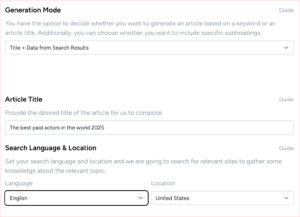Wondering if paragraph headers still hold weight in SEO strategies as we move through 2024?
With search engine algorithms constantly evolving, it’s crucial to stay updated on the latest trends and best practices for optimizing your content.
In this article, we’ll delve into the significance of paragraph headers in SEO for 2024 and explore how they can impact your website’s visibility and ranking on search engine results pages.
How do paragraph headers impact user experience on a webpage?
When you visit a webpage, paragraph headers play a crucial role in guiding your reading experience. They break up content, provide structure, and make it easier for you to navigate and understand the information presented.
Headers act as signposts, highlighting key points and helping you quickly find the specific information you are looking for. They also improve the overall readability of the page, making it more visually appealing and engaging for the reader.
Relevance of Header Tags
Given the impact paragraph headers can have on the user experience, using them is essential. Header tags organise and structure your content for search engines to better understand and index.
When you use header tags such as H1, H2, and H3, you are providing a clear hierarchy to your content. Search engines can better comprehend the hierarchy and importance of your content. This helps search engines determine the main topics of your page and improve its visibility in search results.
By incorporating relevant keywords into your headers, you can further signal to search engines the key themes of your content. Remember, well-structured header tags can improve the readability and SEO performance of your website, making it more likely to rank higher in search results.
User Experience Considerations
Following on from this, considering user experience is crucial when optimising header tags for SEO to ensure visitors can easily navigate and comprehend your website’s content. Well-structured headers help users quickly grasp the main topics covered in your webpage.
Clear and descriptive headers not only enhance readability but also improve user engagement. By utilising relevant keywords in your headers, you can guide users and search engines to understand the context of your content.
Additionally, using consistent header styles throughout your website creates a sense of uniformity and professionalism. Remember, aligning your header tags with the main topic and subtopics of your content can make a substantial difference in your SEO strategy.
Mobile-Friendly Header Optimisation
Keep in mind that more and more users access websites from their mobile devices. Make sure you optimise your header tags for mobile devices to ensure a seamless browsing experience for users on smartphones and tablets. Mobile-friendly header optimisation is crucial for improving your site’s visibility and user engagement.
- Keep your header tags concise and relevant to help mobile users quickly grasp the content of each section.
- Use keywords strategically in your headers to enhance SEO performance on mobile devices.
- Ensure that your headers are legible and visually appealing on smaller screens to maintain a user-friendly interface.
Header Tags and Voice Search
Implementing header tags strategically can significantly impact your website’s visibility in voice search results.
When users conduct voice searches, they often use natural language queries. By incorporating relevant keywords into your header tags, you increase the chances of your content being picked up by voice assistants like Siri, Alexa, or Google Assistant.
Clear and concise header tags also help these voice-enabled devices understand the structure and context of your content, making it more likely to be featured in voice search results.
Best Practices for Header Optimisation
For optimal header optimisation, focus on incorporating relevant keywords and structuring your headers logically to enhance both user experience and search engine visibility.
- Begin with an H1 header that clearly summarises the content of the page, using a primary keyword to signal its relevance.
- Subsequent headers, such as H2 and H3, should follow a hierarchical structure, breaking down the main topic into subtopics. Incorporate long-tail keywords naturally within these headers to capture specific search queries.
- Keep your headers concise, informative, and engaging to maintain user interest while signalling to search engines the key topics covered on the page.
Conclusion
In 2024, paragraph headers remain crucial for SEO. They provide structure and improve readability for both users and search engines. By incorporating relevant keywords into headers, websites can enhance their visibility and ranking potential.
Ensuring that paragraph headers are informative and engaging can significantly impact a site’s overall SEO performance. Embrace the power of headers to optimise content and drive organic traffic effectively.
For more reading, check out the following articles from our SEO Academy.





